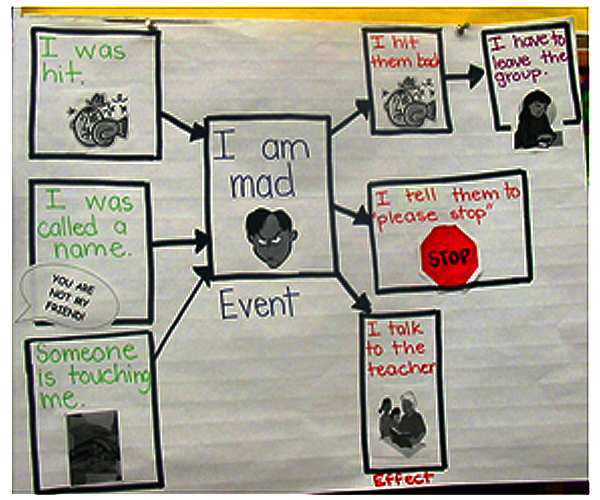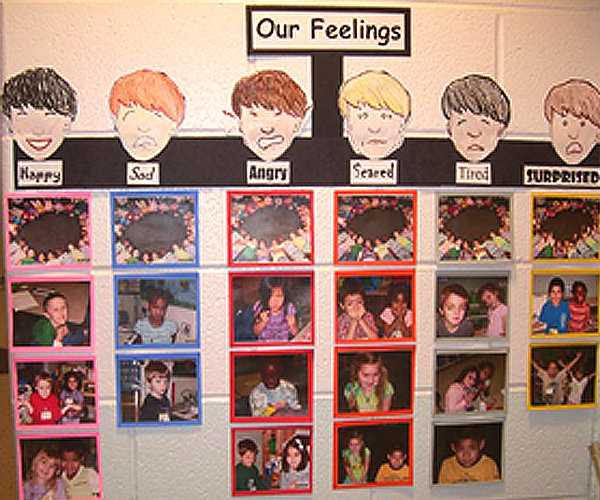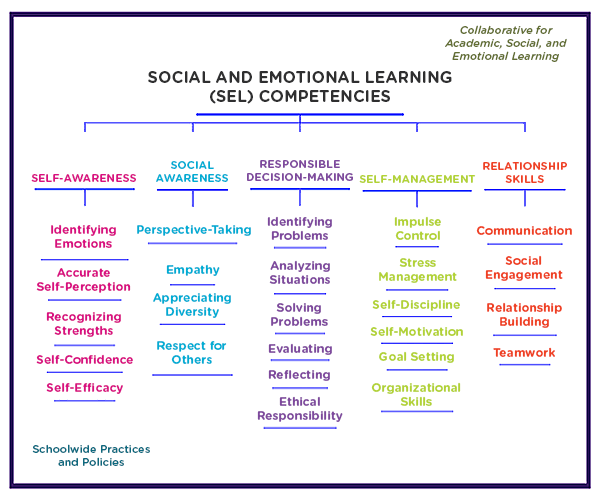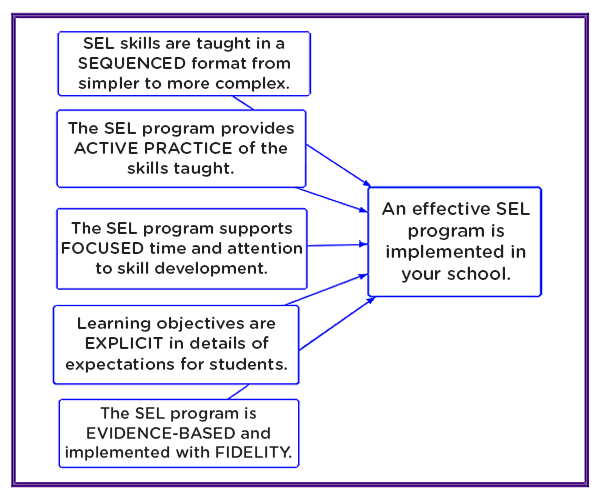Reading, Writing and Relationship Skills: Social and Emotional Learning at School
JUNE 5, 2018
What's the most important thing for students to learn at school? Reading, writing and arithmetic matter more than ever—but if students don't have good social and emotional skills, their ability to learn anything else will be severely compromised. That's why many schools are implementing formal "social and emotional learning" (SEL) programs to build non-academic skills like self-regulation, empathy, and effective decision-making. While these skills are not directly tested on standardized assessments, schools that focus on SEL find that these programs have a significant impact on both school climate and academic outcomes. The Five Core Social-Emotional Learning Competencies SEL encompasses a suite of skills, attitudes, and behaviors that influence how well students are able to navigate daily challenges, interact with people around them, and understand themselves and others. The Cooperative for Academic, Social, and Emotional Learning (CASEL) has identified five core SEL competencies. These competencies include:
- Self-Awareness: This is the ability to identify your own feelings, thoughts, and values and recognize how they influence your behavior. Students with high self-awareness are able to accurately assess their strengths and weaknesses, set personal goals, and maintain a "growth mindset" grounded in optimism and self-efficacy.
- Self-Management: Awareness alone isn't enough—students must be able to use that self-awareness to adjust and regulate their own emotions and behaviors. Students with good self-management skills demonstrate high levels of self-control and are able to delay gratification and persevere through challenges in order to meet their goals.
- Social Awareness: Social awareness turns the focus outward, on the emotions and needs of the people around us. Students with social awareness are able to understand and follow social norms, demonstrate empathy for people around them, appreciate diversity, and show understanding and compassion for other people's needs, including people who are different from them.
- Relationship Skills: Relationship skills involve the ability to apply social awareness in how students interact with people around them. This includes the ability to work cooperatively, resolve conflict peacefully and constructively, resist negative peer pressure, seek help from peers and adults, and engage in behaviors that build healthy relationships.
- Responsible Decision-Making: To make responsible decisions, students must be able to evaluate the potential consequences of a decision and consider the impact of their decisions on both themselves and others around them. This includes consideration of ethical norms, health and safety standards, other people's needs and feelings, personal values, and how a decision may impact the student's ability to reach a goal.
The five core competencies are interrelated and build on one another. Together, they create a solid foundation for success in the classroom and beyond. Social-emotional skills are the basis for the essential "soft skills" that employers are looking for—skills like time management, self-direction, teamwork, and leadership. Mastering the five core SEL competencies will enable students to reach their academic, career, and personal goals. The Impact of SEL Social and emotional skills are important both for their own sake and for their impact on learning and academics. Brain research tells us that the brain focuses best when there is a balance between emotion and meaning. SEL creates the conditions in which effective learning can take place. SEL programs can help schools improve their school climate and learning environment. SEL is linked with:
- Reductions in behavioral problems, including aggression between students, bullying, and vandalism
- Increases in pro-social behaviors such as helping others, kindness, tolerance, conflict resolution, and cooperation
- Lower levels of stress and distress among students
- Stronger relationships among students and between students and teachers
- More positive attitudes towards school and learning
SEL can help school leaders create a learning environment in which students feel safe, confident, and motivated. This is an essential foundation for learning; students who are stressed, distracted by conflicts with peers or teachers, or unable to regulate their emotions and behaviors cannot perform to their best ability academically. The impact on academics is significant, measurable, and long lasting. A 2011 meta-analysis of SEL research found that SEL programs are associated with an average 11-point percentile gain in academic achievement. A 2017 meta-analysis by CASEL showed that students exposed to SEL in school continued to outperform peers on academic, social, and behavioral indicators as long as 18 years later. The SAFE Approach to SEL Fortunately, SEL skills can be explicitly taught and developed in the classroom as well as at home and in the community. Teachers can support the growth of SEL skills in their students through explicit SEL lessons, modeling of the core SEL competencies, and positive reinforcement of desired behaviors and attitudes. Teachers should also provide opportunities for students to practice and apply SEL skills throughout the day. One approach to SEL uses the acronym "SAFE":
- Sequenced:Activities are connected and coordinated to foster skills development.
- Active:Active/hands-on forms of learning are used to help students master new skills.
- Focused:The program emphasizes personal and social skills and provides focused time for practice of these skills.
- Explicit:The curriculum targets and explicitly teaches specific social and emotional skills.
Additionally, the program should be evidence-based and implemented with fidelity.
Mapping the Way to Positive Behaviors and Outcomes SEL programs may incorporate a variety of strategies, including storytelling, modeling, role-playing, and structured practice in decision-making, conflict resolution, and relationship skills. Many Thinking Maps schools are also incorporating the Maps into their SEL programs. Thinking Maps are highly effective in helping students think through the consequences of decisions, brainstorm solutions to problems together, create action plans for reaching their goals, and understand themselves. As students construct the Maps independently or collaboratively, they take ownership of strategies that help them construct meaning, make abstract ideas concrete, and build self-awareness and empathy. Here are some examples of Thinking Maps for SEL: 

Thinking Maps helped build a more positive learning environment at Kenilworth Elementary School. Principal Anthony Pietrangeli says, "Thinking Maps has changed the culture of our school. There is more enthusiasm for learning, and students and teachers are having deeper dialogues in the classroom." In today's high-pressure K-12 environment, any time spent on something other than pure academics may feel like time wasted. But the research on social emotional learning says that these programs are time well spent. In fact, few programs have such lasting and positive impact on student outcomes in the classroom, college, and career. Students with strong SEL skills go on to build happy and healthy relationships, achieve success in higher education and the workforce, and make positive contributions as citizens and community members. For Further Reading and Viewing
Continue Reading
September 16, 2024
Why do we write? And why do we teach writing? In a world where Large Language Models (LLMs) are now ubiquitous, these questions have taken on a new urgency for students and teachers—and, indeed, for professional writers. Writing instruction in the AI era must focus on helping students discover and express their own unique ideas, voice, and purpose.
September 14, 2023
Reading comprehension is the foundation for academic success across all subject areas. And yet, many students still struggle to engage deeply with written content and pull meaning from complex text. Here’s how teachers can support development of “deep cognitive structures” for reading comprehension that reduce the cognitive load so students can focus on content.
August 15, 2023
Aligning reading instruction with the science of reading helps schools raise reading scores. Thinking Maps supports research-based reading instruction with practical, brain-based tools for word recognition and language comprehension.
May 9, 2022
Many students struggle with writing. Giving students meaningful practice and clear structures for writing helps them move their thoughts out of their heads and onto the page.

